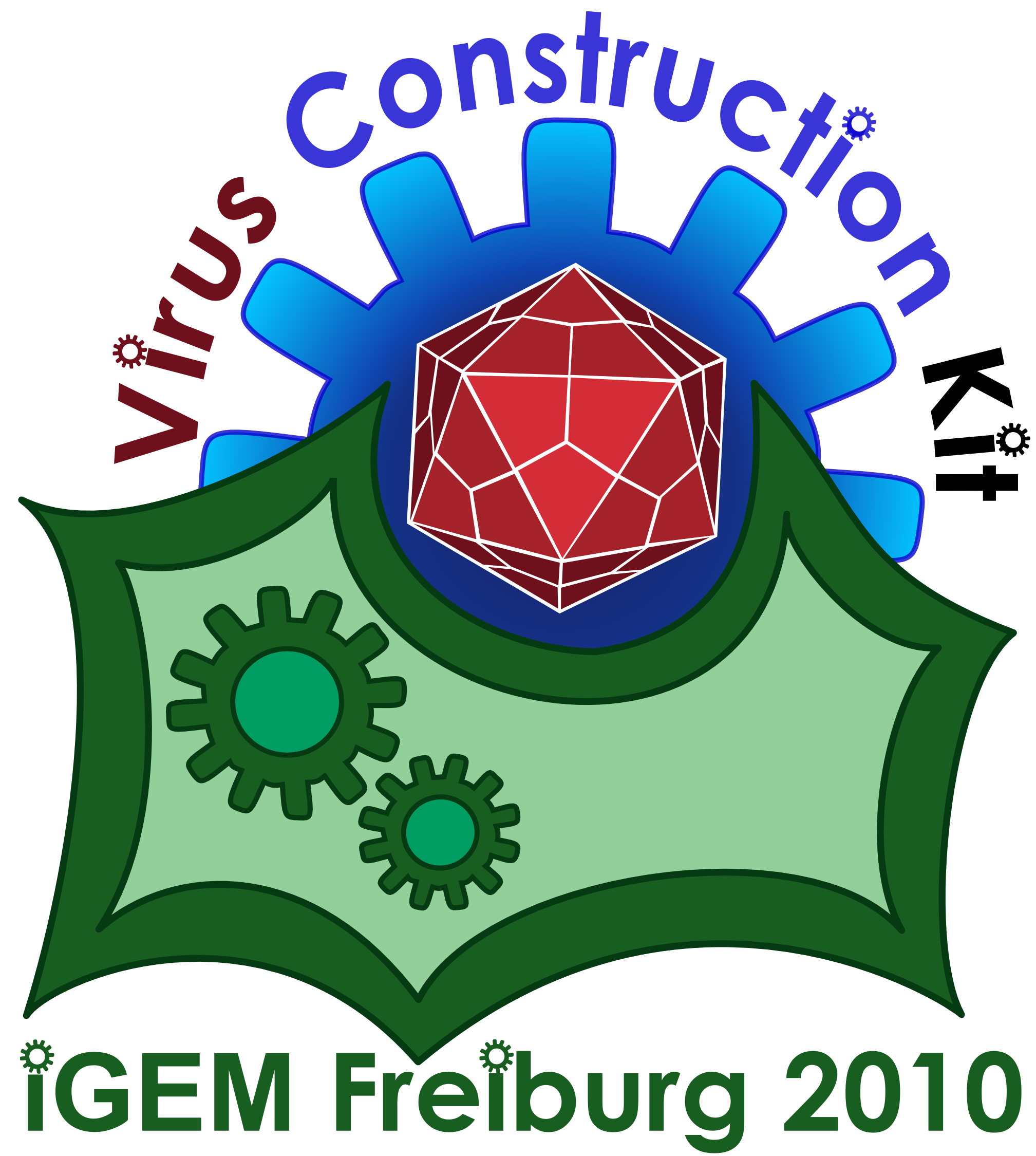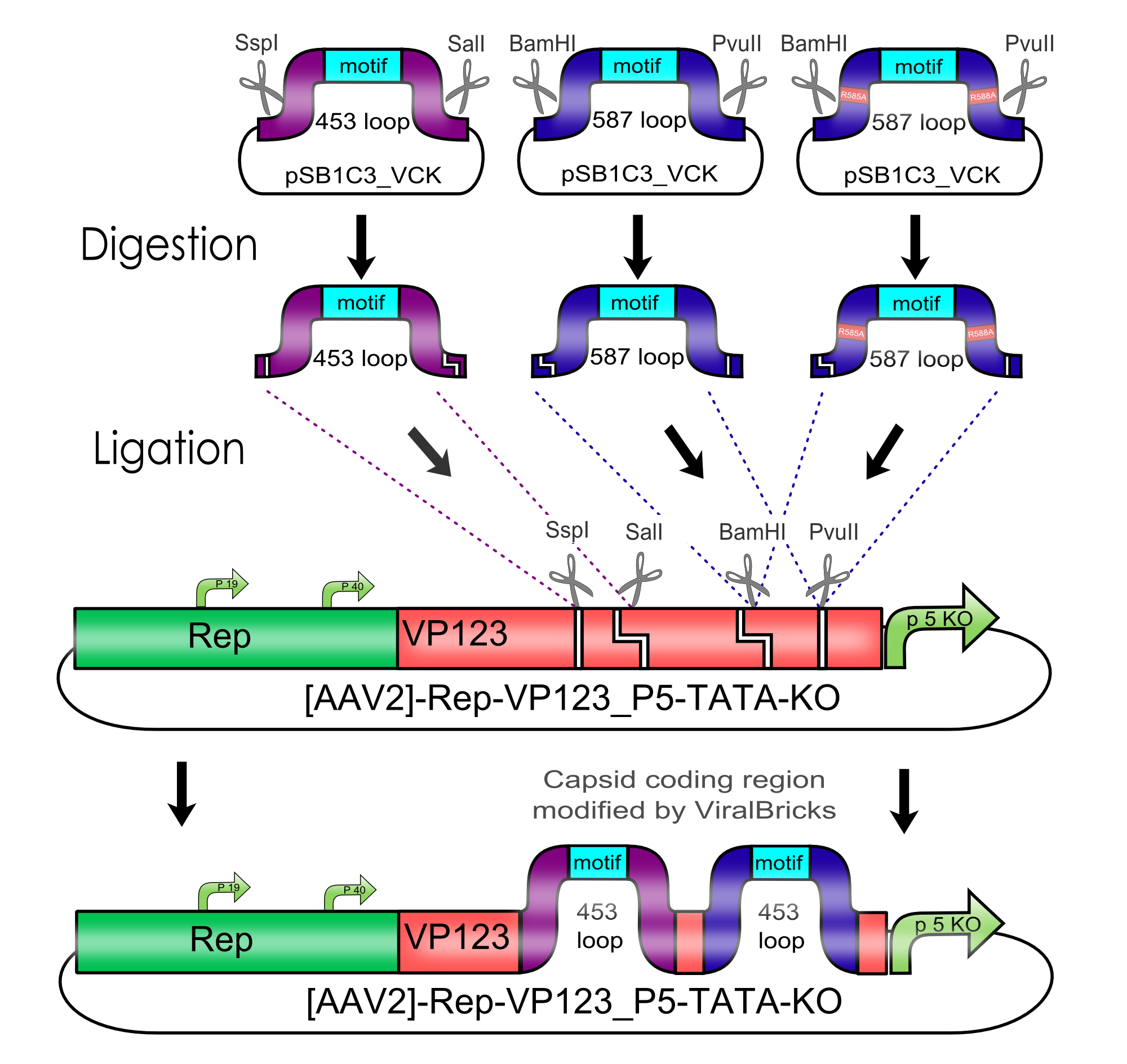User:VolkerMorath
Error: Table names may only contain letters, numbers, and underscore
Contents
Virus Construction Kit
info AT biobricks DOT org
Viral Vectors are modified viruses that are used in molecular biology to transfer genetic material into desired cells. The adventage of viral vectors is that the different viral mechanismns can be employed to transduce the target cell in an specific and efficient manner. This process is called transduction when eucaryotic cells are the target of the gene transfer.
Key properties of a viral vector
- Safety: Viral vectors are often engineered on the basis of an human infectious virus. To reduce the risks for people that handle the virus and patient of an viral vector base therapy the genetic material of the viurs is manipulated in a way to knock-out the ability of the viral vector to reproduce. To reach this requirement the genes coding for the production of the viral capsid are often provided in trans to ensure that the viral vector does not contain the information for
- Low toxicity: For any use the effect the viral vector has on the transduced cells is important to consider. The [http://en.wikipedia.org/wiki/Cytopathic_effect cytopathic effect] describes the effect of the physiology and morphology the infection with a viral particle has. For the use in vivo the immune response that is triggered by the viral vector has to be considered.
- Stability: Some viruses evolved a genome organisation that makes it possible to rearrage its genome easily. This feature has been used in the evolution to outflank the immune system of host organisms successfully but is absolute not desired in gene transfer with viral vectors and has to be reduced therefor.
- Cell type specificity: Many viruses evolved in a way that they are able to transduce many different cell types giving them a wide host cell range. For experimental and therapeutical applications a more narrow cell specificity can be desired. There viral vector systems should provide the possibility to modify the viral tropism in order to target specific cell types.
- Identification: ????
Main applications of viral vectors:
Double stranded DNA Viruses
The Adenovirus
| [http://expasy.org/viralzone/all_by_species/183.html Adenovirus] | |
|---|---|
| 200px | |
| Group: | ds DNA Virus |
| Family: | Adenoviridae |
| Genus: | Mastadenovirus |
| Host range | Human, mammals |
| Capacity: | 35000bp |
The Simian virus 40
| [] | |
|---|---|
| 200px | |
| Group: | ds DNA Virus |
| Family: | |
| Genus: | |
| Host range | |
| Capacity: | |
Single stranded DNA Viruses
The Adeno-associated Virus
| [http://expasy.org/viralzone/all_by_species/226.html Adeno-associated Virus] | |
|---|---|
| 200px | |
| Group: | ss DNA Virus |
| Family: | Parvoviridae |
| Genus: | Dependovirus |
| Host range | Human, vertebrates |
| Capacity: | 4700bp |
In the iGEM competition 2010 the Team Freiburg bioware constructed a Virus Construction Kit that makes the Adeno-associated virus (AAV2) available for all users of the parts registry.
The Adeno-associated virus is a well studied vector for eukaryotic gene transfer.
Double stranded RNA Viruses
Single stranded RNA (+) Viruses
Single stranded RNA (-) Viruses
Double stranded RNA retro-transcribing Viruses
Single stranded RNA retro-transcribing Viruses
The Lentivirus
| [http://expasy.org/viralzone/all_by_species/264.html Lentivirus] | |
|---|---|
| 200px | |
| Group: | ds DNA Virus |
| Family: | Retroviridae |
| Genus: | Lentivirus |
| Host range | Vertebrate |
| Capacity: | 9750bp |
References: 1)http://expasy.org/viralzone/



